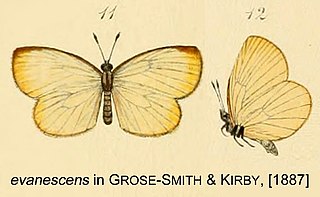
Kenneth Casey was an American composer, publisher, author, and child movie star in early silents.

Lepturinae, the lepturine beetles, is a subfamily of the longhorn beetle family (Cerambycidae), containing about 150 genera worldwide. This lineage is most diverse in the Northern Hemisphere. Until recently the subfamily Necydalinae was included within the lepturines, but this has been recently recognized as a separate subfamily. Nine tribes are usually recognized today, with a tenth, Caraphiini, created in 2016. A few genera are of uncertain placement within the subfamily.

Diatraea is a genus of moths of the family Crambidae.

Cymindis is a genus of ground beetle native to the Palearctic, the Near East, and North Africa. It contains the following species:
Polymera is a genus of crane fly in the family Limoniidae.
Erythranthe inflatula, synonyms Mimulus inflatulus and Mimulus evanescens, is a rare species of monkeyflower known by the common name disappearing monkeyflower. It is native to the western United States, where it is known from about ten locations in and around the Great Basin within the states of Idaho, Oregon, and California; it is also found in Nevada. Specimens of the plant had been catalogued as Mimulus breviflorus, but on further examination it was evident that they were a separate, unclassified species; this was described to science in 1995. It is thought that the plant may have evolved via hybridization between Erythranthe breviflora and Erythranthe latidens, or that it evolved from E. latidens and then into E. breviflora.
Acanthocinini is a tribe of longhorn beetles of the subfamily Lamiinae. It was described by Blanchard in 1845.

Clytini is a tribe of beetles in the subfamily Cerambycinae, containing the following genera:
Stizocera is a genus of beetles in the family Cerambycidae, containing the following species:
Cymindis abbreviata is a species of ground beetle in the subfamily Harpalinae. It was described by Casey in 1920.
Cymindis ampliata is a species of ground beetle in the subfamily Harpalinae. It was described by Casey in 1920.
Cymindis atripennis is a species of ground beetle in the subfamily Harpalinae. It was described by Casey in 1920.
Cymindis atrolucens is a species of ground beetle in the subfamily Harpalinae. It was described by Casey in 1913.
Cymindis blanda is a species of ground beetle in the subfamily Harpalinae. It was described by Casey in 1913.
Cymindis obscura is a species of ground beetle in the subfamily Harpalinae. It was described by Casey in 1920.
Cymindis subcarinata is a species of ground beetle in the subfamily Harpalinae. It was described by Casey in 1920.

Liptena evanescens, the pink liptena, is a butterfly in the family Lycaenidae. It is found in eastern Ivory Coast, Ghana, Nigeria, Cameroon, Bioko, Sao Tome and Gabon. The habitat consists of forests.
Planodes quaternarius is a species of beetle in the family Cerambycidae. It was described by Newman in 1842. It is known from the Philippines.

Lepturini is a tribe of flower longhorns in the family Cerambycidae.
Eulimnichus is a genus of minute marsh-loving beetles in the family Limnichidae. There are more than 30 described species in Eulimnichus.






